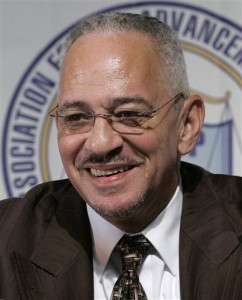Major Banks Back Away from Loans to Community College Students
Today’s New York Times reports that the current credit crisis has triggered an unprecedented retreat from community colleges by several of the nation’s major banks. These banks include Citibank, JP Morgan Chase, SunTrust and PNC. Banks have also begun to drop certain 4-year institutions, including less competitive and for-profit schools.
This shift threatens to limit access to higher education for many of the nation’s most economically disadvantaged students, including significant numbers of African Americans. Times reporter Jonathan Glater describe the demographic most vulnerable to shifts in community college aid and the likely impact of major banks’ retreat from 2-year institutions:
[…]if the credit crisis and the ensuing turmoil in the student loan business persist, some of the nation’s neediest students will be hurt the most. The difficulty borrowing may deter them from attending school or prompt them to take a semester off. When they get student loans, they will wind up with less attractive terms and may run a greater risk of default if they have to switch lenders in the middle of their college years.
Tuition and loan amounts can be quite small at community colleges. But these institutions, which are a stepping stone to other educational programs or to better jobs, often draw students from the lower rungs of the economic ladder. More than 6.2 million of the nation’s 14.8 million undergraduates — over 40 percent — attend community colleges. According to the most recent data from the College Board, about a third of their graduates took out loans, a majority of them federally guaranteed.
“If we put too many hurdles in their way to get a loan, they’ll take a third job or use a credit card,” said Jacqueline K. Bradley, assistant dean for financial aid at Mendocino College in California. “That almost guarantees that they won’t be as successful in their college career.”
Some institutions remain committed to providing loans to students at the widest possible range of schools. Glater identifies Sallie Mae, Nelnet, and Wells Fargo as lending institutions that plan to continue offering loans to students, regardless of where they are enrolled:
The government has been taking additional steps to keep the student loan market operating smoothly. And some lenders’ doors remain wide open. Sallie Mae and Nelnet recently reaffirmed their commitment to federal loans regardless of the institution a student attends. Kristin Shear, director of student financial services at Santa Rosa Junior College, said that days after the school was dropped by Citibank, Wells Fargo called to say it was eager to lend to students there.
Citibank’s motivations, as the bank whose withdrawl from the community college sector has been most dramatic, reflect the concerns of many of the major lenders, whose narrowing of the range of institutions to whose students they are willing to lend are based on financial self interest:
The banks that are pulling out say their decisions are based on an analysis of which colleges have higher default rates, low numbers of borrowers and small loan amounts that make the business less profitable. (The average amount borrowed by community college students is about $3,200 a year, according to the College Board.) Still, the cherry-picking strikes some as peculiar; after all, the government is guaranteeing 95 percent of the value of these loans.
Mark C. Rodgers, a spokesman for Citibank, which lends through its Student Loan Corporation unit, said the bank had “temporarily suspended lending at schools which tend to have loans with lower balances and shorter periods over which we earn interest. And, in general, we are suspending lending at certain schools where we anticipate processing minimal loan volume.”
Financial aid officials in California said that Citibank had stopped making loans to students at all community colleges in the state. Mr. Rodgers said the bank would not provide details about which schools were affected.
This recent and ongoing withdrawl from lending to students at community colleges, less competitive colleges, and for-profit institutions speaks to the need for student loans to be administered and funded by the state and/or federal government, rather than by banks that must be accountable to sometimes tempermental stockholders and the widely fluctuating stock market. Whether funded by the state or the federal government, student loans must remain accessible to all students — especially those at community colleges and less competitive colleges and universities — or else a key pathway to economic self-determination and financial stability will be closed to many for whom education might well be the only route out of poverty.
To many, it might seem that the question of whether or not banks and/or governments should fund loans to students at for-profit institutions is less clear-cut. More important than the question of for-profit or not-for-profit is the question of accredited versus non-accredited schools. Non-accredited institutions and/or programs could justifiably dropped from loan rosters without much protest, because the value of degrees from such institutions might be considered negligible in some cases.
You can read the entire text of the New York Times article “Student Loans Start to Bypass 2-Year Colleges” at THIS link.
Posted by Ajuan Mance
Posted in Uncategorized | 1 Comment »





